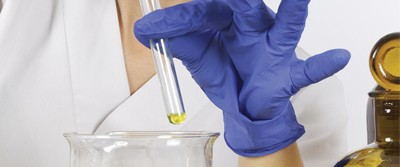Gold Nanoparticles May Help Detect Kidney Disease

By Hamilton Waldron
In an effort to help urologists better understand the early stages of kidney disease, University of Texas at Dallas scientists are currently experimenting with some very innovative techniques.
Dr. Jie Zheng, associate professor of chemistry and biochemistry at UT Dallas, is using tiny gold nanoparticles combined with a technique called in vivo near-infrared fluorescence imaging to study early-stage kidney disease in a live animal model.
It is estimated that roughly 10 percent of adults in the U.S. may have chronic kidney disease. This is a scary reality, as kidney disease is often dubbed “the silent killer,” and usually worsens before anything can be done.
A Golden Solution
Noninvasive in vivo near-infrared fluorescence is inexpensive and used by many in laboratories. The way it works is pretty amazing.
First, a fluorescent organic dye is introduced into the subject, which is then exposed to an external source of invisible near-infrared light that can penetrate the skin. When the light reaches the dye, the dye displays a light of a different wavelength, which is then transmitted by a camera. This technique helps facilitate and inform eventual clinical investigations of disease in humans.
However, this technique has proven difficult for preclinical kidney disease studies because organic dyes don’t produce an adequate contrast in the kidneys. But Zheng and his colleagues have since figured out a way for it to work, and the key is tiny gold nanoparticles less than six nanometers in size, which are just miniscule enough to clear completely out of the kidney through urination.
To take it a step further, Zheng has also discovered that the tendency of the nontoxic gold nanoparticles to remain in the body longer than other fluorescent dyes can prove beneficial once it’s time for surgery. As Zheng puts it, the problem with the current dye used by surgeons is that it dissipates faster, requiring surgeons to keep injecting dye into the patient. Zheng believes that in the future, the gold nanoparticles could help surgeons improve their accuracy in fluorescence-guided surgery.
CLASSROOM DISCUSSION
Discuss how long it will likely take for this technique to truly be implemented.
Research what causes kidney disease, then discuss ways to prevent the disease.
VOCABULARY
- Fluorescence Imaging
- Nanoparticles

